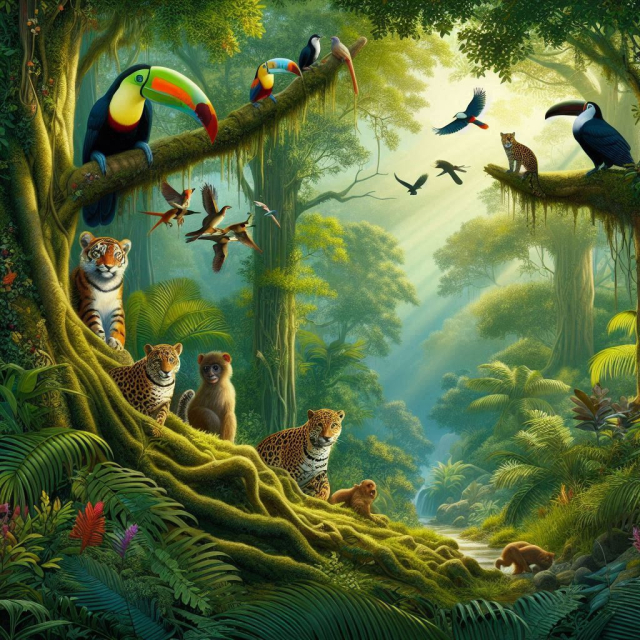Ecuador is one of the countries with the greatest biodiversity in the world, hosting a vast range of animal and plant species. However, this rich biodiversity is at risk due to human action. In particular, several animal species are in danger of extinction due to factors such as deforestation, climate change, poaching and urban expansion. This article explores some of the most endangered species in Ecuador, the causes of their danger and the conservation initiatives underway.
Factors that Threaten Species.
Deforestation.
Deforestation is one of the main threats to fauna in Ecuador. The indiscriminate clearing of forests for agriculture, livestock and mining has destroyed vast areas of natural habitat. This particularly affects species that depend on tropical forests for their survival.
Climate change.
Climate change is altering Ecuador's ecosystems. Variations in temperatures and precipitation patterns affect the natural habitats of many species. For example, global warming has led to the melting of glaciers and the reduction of snowy areas, which affects species that live in high areas of the Andes.
Illegal Hunting and Trafficking.
Poaching and illegal trafficking of exotic species are serious problems in Ecuador. Animals such as jaguars and parrots are hunted for their fur, feathers and other products, which has drastically reduced their populations.
Urban sprawl.
Urban growth and infrastructure expansion also contribute to habitat loss. Natural areas are transformed into residential and commercial areas, fragmenting habitats and making the survival of many species difficult.
Endangered species.
Andean Condor (Vultur gryphus).
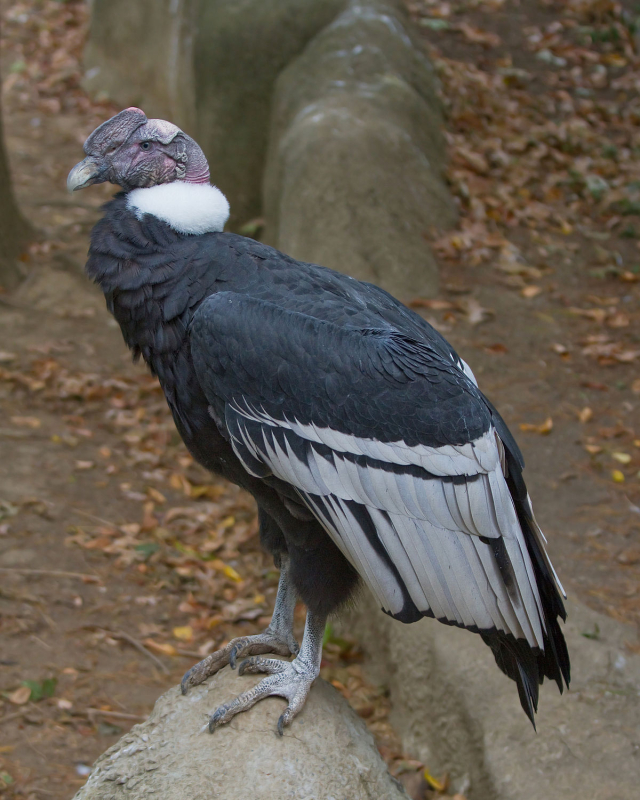
The Andean condor is one of the national symbols of Ecuador and is critically endangered. This majestic bird, which can reach a wingspan of up to 3 meters, lives in the mountainous areas of the Andes. Habitat loss and poaching have reduced their population to a few hundred nationwide. Conservation initiatives include captive breeding programs and protection of their natural habitat.
Andean Bear (Tremarctos ornatus).
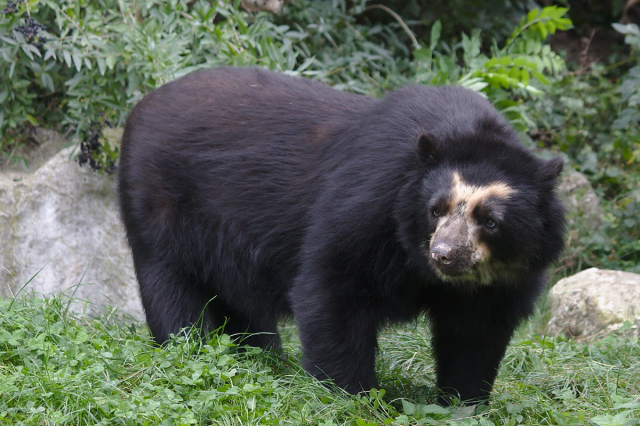
The Andean bear, also known as the spectacled bear, is the only bear native to South America and is classified as vulnerable. It is found in the cloud forests and paramos of the Ecuadorian Andes. Deforestation and poaching are the main threats to this species. Conservation efforts focus on protecting its habitat and educating local communities about the importance of preserving this species.
Jaguar (Panthera onca).
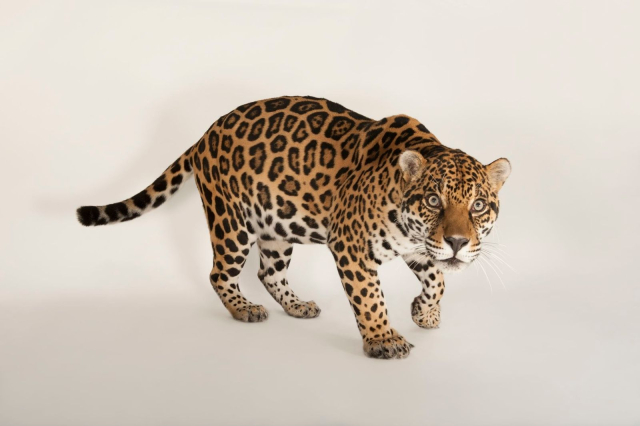
The jaguar is the largest cat in the Americas and is endangered due to habitat loss and poaching. These majestic animals are found in the rainforests of the Amazon and other regions of Ecuador. Jaguars are hunted for their fur and other body parts, and also face habitat fragmentation due to deforestation. Conservation initiatives include the creation of ecological corridors and the implementation of strict anti-poaching measures.
Galapagos Giant Tortoise (Chelonoidis spp.).
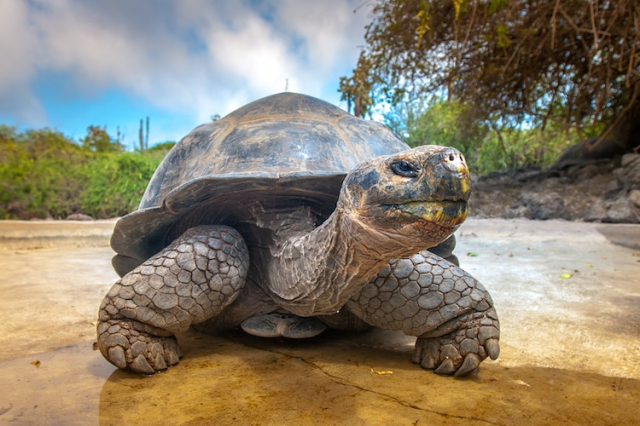
The Galapagos giant tortoises are perhaps Ecuador's most iconic species. There are several species of giant tortoises in the Galapagos Islands, and many of them are in danger of extinction. The introduction of invasive species, hunting and habitat loss have contributed to its decline. Conservation efforts include captive breeding programs and the eradication of invasive species on the islands.
Amazon River Dolphin (Inia geoffrensis).
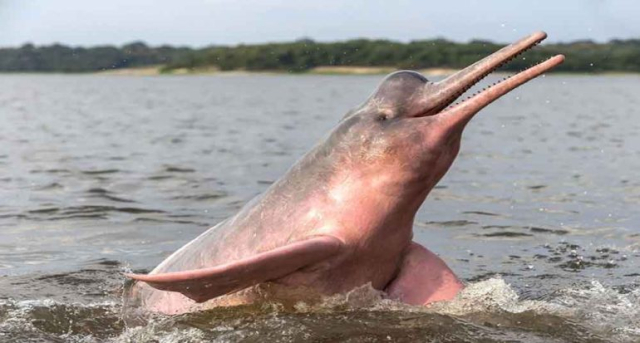
The Amazon river dolphin, also known as the bufeo, is a species of freshwater dolphin that lives in the Amazon basin. It is classified as vulnerable due to water pollution, dam construction and bycatch in fishing nets. Conservation initiatives include protecting its aquatic habitat and reducing pollution.
Amazonian Tapir (Tapirus terrestris).
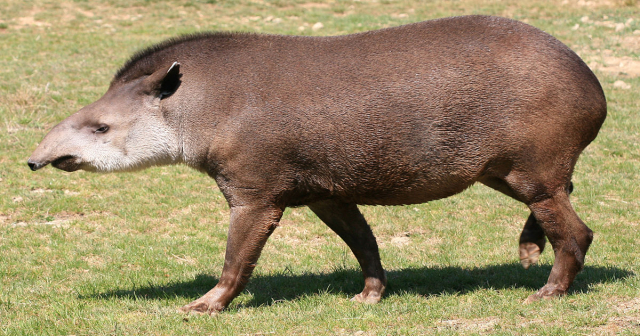
The Amazon tapir is the largest land mammal in South America and is endangered due to deforestation and poaching. It lives in the tropical forests of the Amazon and other forest areas of Ecuador. Conservation efforts focus on protecting forests and educating local communities about the importance of this species.
Conservation Initiatives in Ecuador.
Natural Reserves and National Parks.
Ecuador has established several nature reserves and national parks to protect its biodiversity. The creation of these protected areas has been essential for the conservation of endangered species. Notable examples include Yasuní National Park in the Amazon and Galápagos National Park on the islands of the same name. These areas provide refuge to numerous species and allow scientific research and conservation programs to be carried out.
Captive Reproduction Programs.
Captive breeding programs have been effective in increasing populations of some endangered species. These programs seek to raise animals in controlled environments and then reintroduce them to their natural habitats. Galapagos giant tortoises and Andean condors are examples of species that have benefited from these programs.
Education and Awareness.
Education and public awareness are essential for long-term conservation. Educational campaigns in schools and local communities help change attitudes and behaviors towards wildlife and the environment. Non-governmental organizations and local governments have implemented environmental education programs to promote the conservation of endangered species.
Legislation and Compliance.
The Ecuadorian government has enacted laws and regulations to protect the country's biodiversity. Enforcement of these laws is crucial to combating poaching and habitat destruction. Penalties for violating these laws must be severe and dissuasive to ensure the protection of endangered species.
Community participation.
The involvement of local communities is vital to the success of conservation efforts. Communities that live near protected areas or that depend on natural resources for their subsistence must be included in conservation programs. Community-based management of natural resources can be an effective strategy to protect biodiversity and improve local livelihoods.
Ecuador's biodiversity is an invaluable treasure that is under threat. Endangered species require urgent attention and action to prevent their disappearance. The conservation of these species is not only crucial for the balance of ecosystems, but also for human well-being. The protection of endangered fauna in Ecuador must be a national and international priority.
Conservation initiatives, such as the creation of protected areas, captive breeding programs, public education, and law enforcement, are essential to preserving the country's biodiversity. Collaboration between governments, non-governmental organizations, local communities and citizens is essential to ensure a future where all species can thrive.
It is the responsibility of all of us to protect and conserve the natural wonders of Ecuador for future generations.
